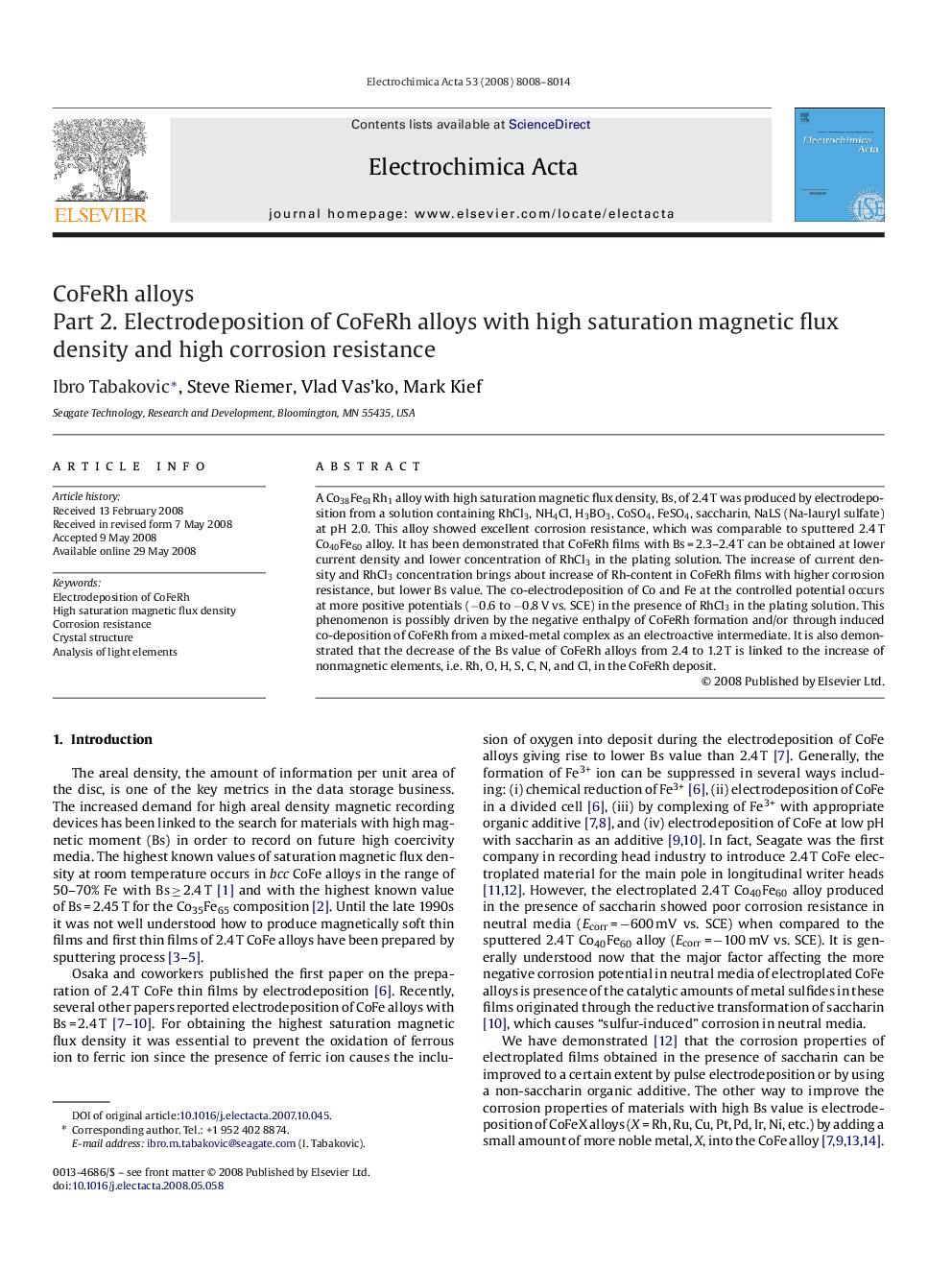| Article ID | Journal | Published Year | Pages | File Type |
|---|---|---|---|---|
| 194622 | Electrochimica Acta | 2008 | 7 Pages |
A Co38Fe61Rh1 alloy with high saturation magnetic flux density, Bs, of 2.4 T was produced by electrodeposition from a solution containing RhCl3, NH4Cl, H3BO3, CoSO4, FeSO4, saccharin, NaLS (Na-lauryl sulfate) at pH 2.0. This alloy showed excellent corrosion resistance, which was comparable to sputtered 2.4 T Co40Fe60 alloy. It has been demonstrated that CoFeRh films with Bs = 2.3–2.4 T can be obtained at lower current density and lower concentration of RhCl3 in the plating solution. The increase of current density and RhCl3 concentration brings about increase of Rh-content in CoFeRh films with higher corrosion resistance, but lower Bs value. The co-electrodeposition of Co and Fe at the controlled potential occurs at more positive potentials (−0.6 to −0.8 V vs. SCE) in the presence of RhCl3 in the plating solution. This phenomenon is possibly driven by the negative enthalpy of CoFeRh formation and/or through induced co-deposition of CoFeRh from a mixed-metal complex as an electroactive intermediate. It is also demonstrated that the decrease of the Bs value of CoFeRh alloys from 2.4 to 1.2 T is linked to the increase of nonmagnetic elements, i.e. Rh, O, H, S, C, N, and Cl, in the CoFeRh deposit.
